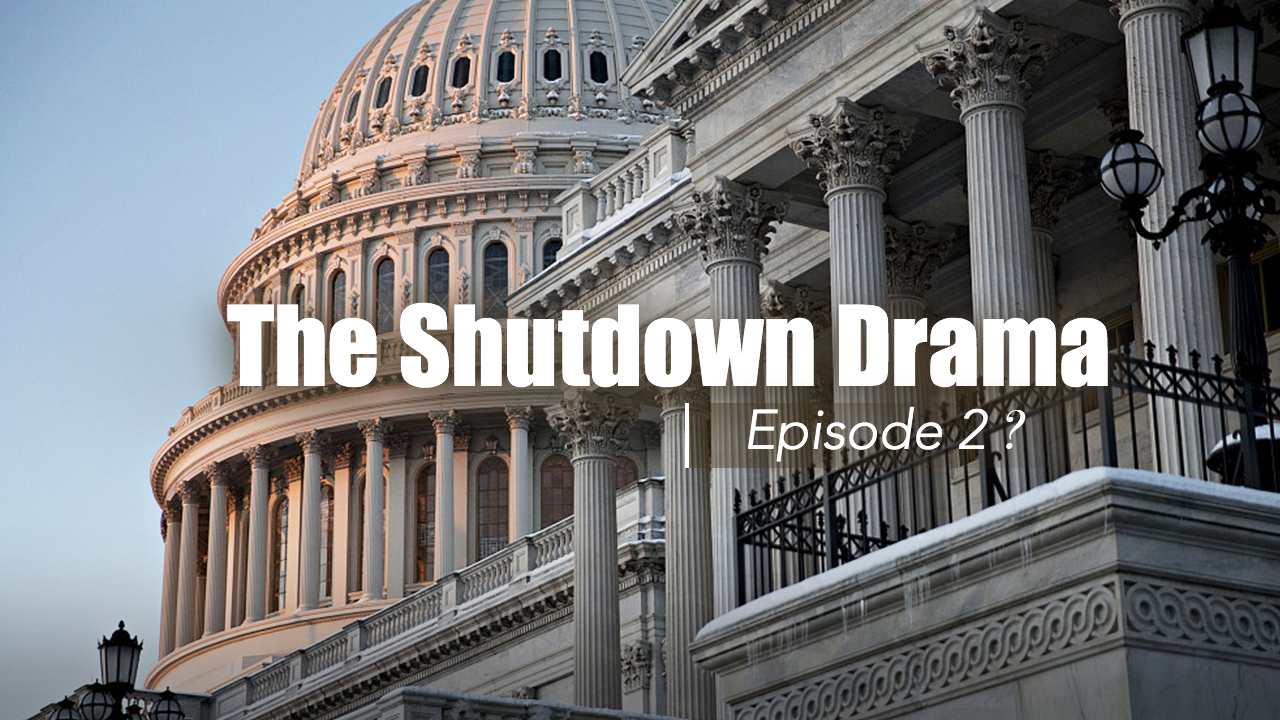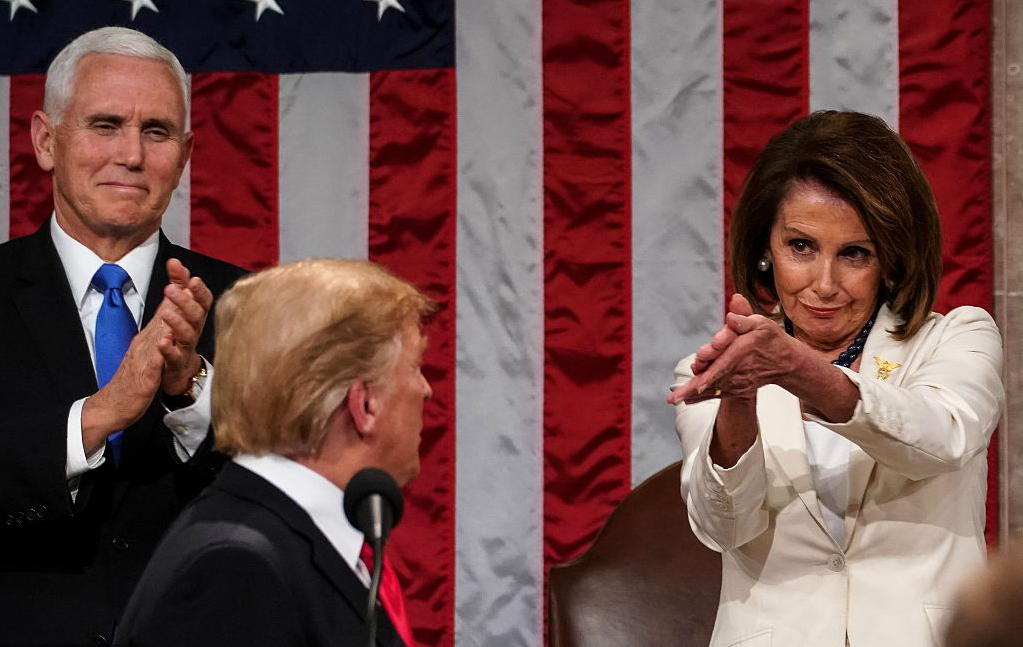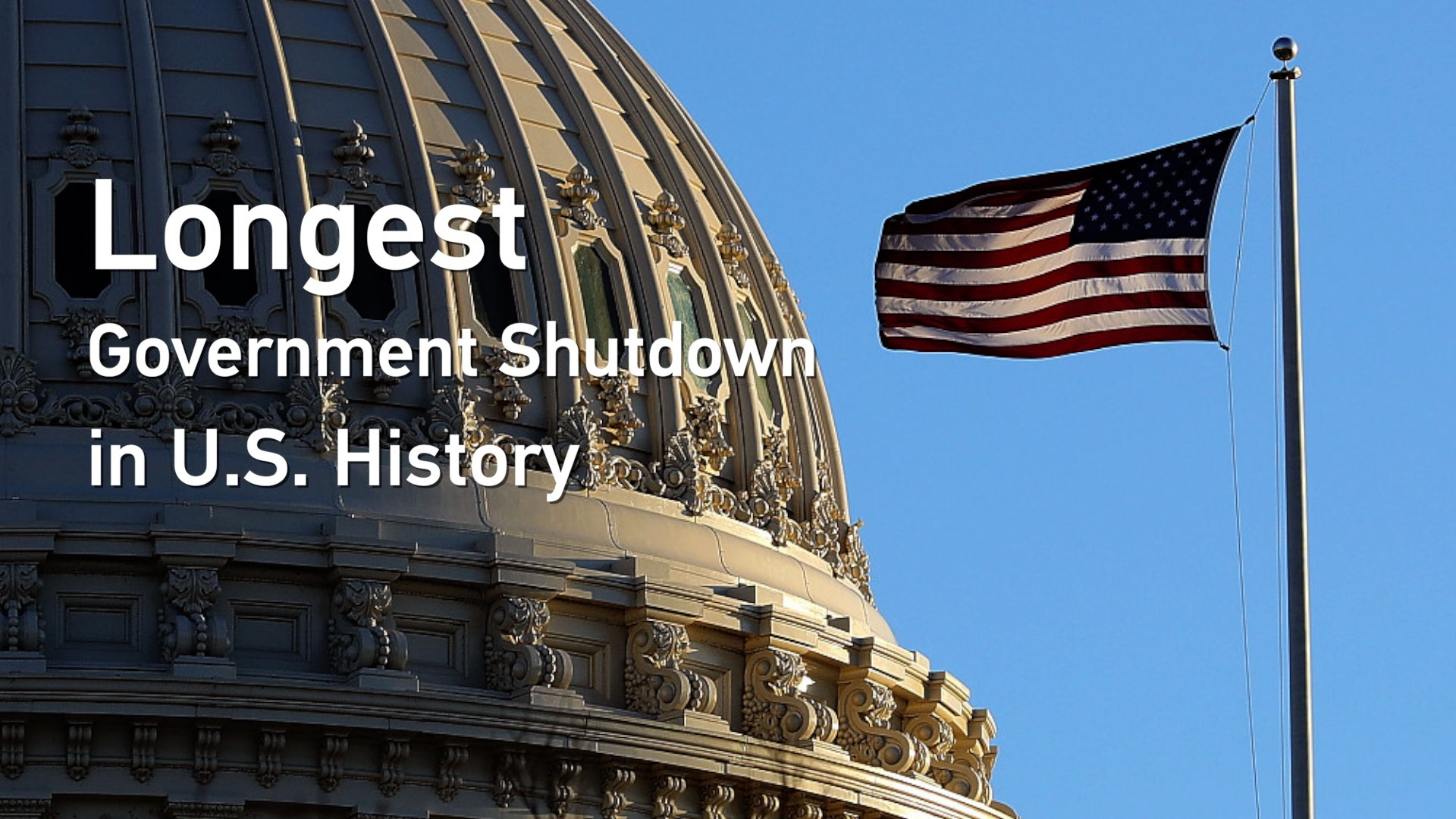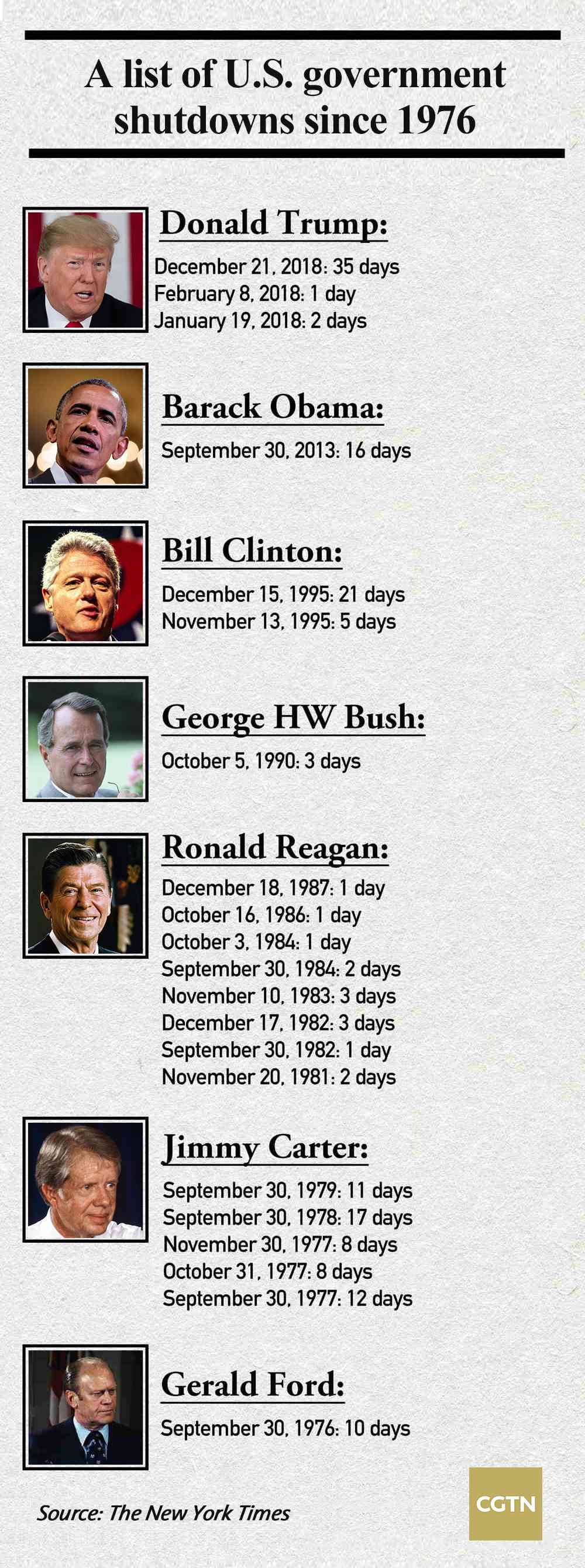
North America
16:44, 08-Feb-2019
What if the shutdown drama enters episode two?
Updated
17:22, 11-Feb-2019
By Wang Mengjie

Winter is leaving, but the U.S. shutdown chaos seems not going away anytime soon. In the possible new season of the political drama, you either move, or you die.
Previously on the shutdown drama
Lasting for over 35 days, the longest shutdown in U.S. history over its President Donald Trump's demand for 5.6 billion U.S. dollars to fund a wall along U.S.-Mexico border, shadowed both the American economy and social confidence.
Scene 1: Where's the rest of my money?
The U.S. economy lost about 11 billion U.S. dollars during the five weeks' shutdown, with the understanding that more significant effects will be felt by individual businesses and workers, particularly those who scrambled to make ends meet after not being paid.

U.S. President Donald Trump arrives to deliver the State of the Union address, alongside Speaker of the House Nancy Pelosi and Vice President Mike Pence, at the U.S. Capitol in Washington, DC, February 5, 2019. /VCG Photo
U.S. President Donald Trump arrives to deliver the State of the Union address, alongside Speaker of the House Nancy Pelosi and Vice President Mike Pence, at the U.S. Capitol in Washington, DC, February 5, 2019. /VCG Photo
Alfreda Dennis-Bowyer, the 63-year-old meat inspector, was among thousands of employees who have experienced delays or anomalies with paychecks.
During the shutdown, Dennis-Bowyer stayed on the job, working overtime, expected to get all her back pay about 9,000 U.S. dollars, while the shutdown ended, the meat inspector told The Washington Post what she got was a check for 250 U.S. dollars.
"When I saw that 250 U.S. dollars, I thought, 'What in the world is this? Where's the rest of my money?'"
Nearly two weeks after the shutdown ended, she finally received her full back pay.
Scene 2: Please stop losing your devices
For NASA, the missed paychecks weren't the only issues to worry about. The shutdown also threatened the agency's cybersecurity, Space.com staff writer Hanneke Weitering warned.
Renee Wynn, NASA's Chief Information Officer, said last month at a post-shutdown town hall meeting that NASA's Security Operations Center (SOC) researched incidents throughout the shutdown.
On average, it faced about one cybersecurity threat per day, which doesn't necessarily mean that hackers were breaking into NASA computers every day, though, Wynn said.
02:22

If a NASA employee loses their government phone, it also counts as a security threat. "Please stop losing your devices," Wynn told the NASA employees during the meeting.
NASA employees who remained at work during the shutdown also had problems running software programs on their computers, because they were unable to renew software licenses and install security patches, Weitering added.
On the next episode
Announced to reopen the government until February 15, Trump noted there are just a few days left for Congress seeking to reach a deal on securing the border that would stop the shutdown crisis.
So, what's next?
Scene 1: A happily ever after ending
Assume the White House officials and congressional aides are able to reach an immigration deal, which means Trump can get the money he wants for border security while also giving Democrats enough in return to protect vulnerable migrants.
While Vox policy reporter Dylan Scott gave a good reason to believe that won't happen.
The real problem behind the shutdown episode is legal immigration, Scott said, adding that the hardliners in the White House want legal immigration cuts while Democrats are generally opposed.
Scene 2: Greek tragedy
In the case if Trump doesn't get the deal he wants, he could do what he did in December to do another shutdown.
That would put the government right back where it was a few days ago: hundreds of thousands of workers furloughed, services suspended, contractors going without pay, and no resolution in sight in the standoff between Trump and Democratic leaders, Scott noted.

An infographic of U.S. government shutdowns since 1976. /CGTN Photo
An infographic of U.S. government shutdowns since 1976. /CGTN Photo
Scene 3: Trump card
Trump edged closer on February 2 to defy the power of the Congress by declaring a national emergency in an attempt to obtain funding for the wall, a step that would likely draw a court challenge from Democrats.
Namely, there will be no deal but the government stays open, and Trump declares a border emergency to get his wall.
Scene 4: The shutdown waltz
Scott believed the last scenario reflects what happened right now, Trump shut down the government to get his wall, Democrats refused to budge, the public blamed Trump, and even his base started to turn against him, so Trump caved and reopened the government without getting any meaningful concessions from Democrats.
(Top image by CGTN's Du Chenxin)

SITEMAP
Copyright © 2018 CGTN. Beijing ICP prepared NO.16065310-3
Copyright © 2018 CGTN. Beijing ICP prepared NO.16065310-3